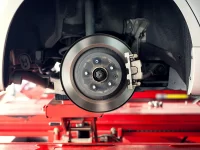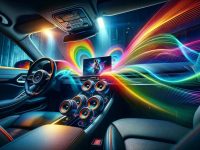Introduction to Car Diagnostics – OBD2 readers

Cars are now more sophisticated than they were just a few decades ago. They no longer consist of just an engine, but they now contain onboard computers. As cars can develop a wide variety of problems, particularly now that they are more sophisticated, it could prove a challenge to identify problems manually, but this is where an On-Board Diagnostics Scanner can help.
An OBD2 reader has the ability to read trouble codes that can cause the engine light to appear. They are the current industry standard and are far more versatile than those that came before it. In 1988, the Society of Automotive Engineers (SAE) brought in a universal connector plug as well as a set of test signals or trouble codes. However, unlike a basic scanner, the OBD2 scanner has the ability to identify trouble codes and provide a detailed diagnosis. Along with this, they also make it possible to tune or tweak the performance of a vehicle. As of 1996, the ODB2 scanner was implemented and from that moment it was the industry standard.
The Basics of an ODB2 Reader
As a vehicle can suffer from a wide range of problems, it is important that those issues are identified as a way of finding a solution. An ODB2 reader can identify what is going on with your vehicle by reading trouble codes that are produced by the onboard computer system known as an Electrical Control Unit (ECU). The ECU will monitor the performance of the vehicle as well as emissions and many other functions. Therefore, when a problem arises, the codes will trigger the check engine light which means that it becomes illuminated, informing the driver of a problem. The codes are five characters long with each code providing a detailed insight into the problem.
What do the Codes Mean?
The first character of the code provides an insight into which system is affected:
- B = Body
- C = Chassis
- P = Powertrain
- U = Undefined
The second digit provides the engineer with an insight into whether the code is generic or enhanced:
- 0 = generic
- 1 = enhanced
The third digit will help to identify the subsystem that the code is linked to:
- 1 = Emission Management (air or fuel)
- 2 = Injector Circuit (air or fuel)
- 3 = Misfire or Ignition
- 4 = Emission Control
- 5 = Idle Control & Vehicle Speed
- 6 = Output Circuit & Computer
- 7 = Transmission
- 8 = Transmission
- 9 = SAE Reserved
- 0 = SAE Reserved
The different types of OBD2 Readers Available
Code Readers
These devices have the ability to read and clear codes from a vehicle. They are the simplest devices that are slightly more basic than other readers. However, they will provide basic information on the problem.
Scan Tools
These are more expensive than the basic code readers but there is a reason for that. These devices come with more features that are not used in readers. They have the ability to gain access to a wide range of data while it also has the ability to read codes that are specific to manufacturers while it does offer a range of options when it comes to troubleshooting.







